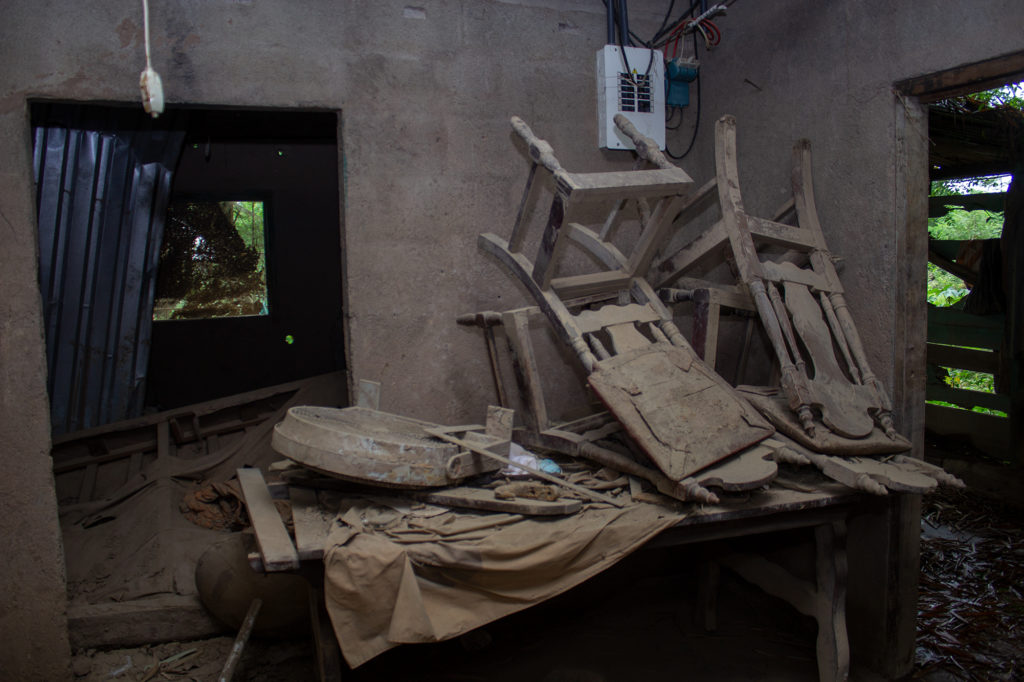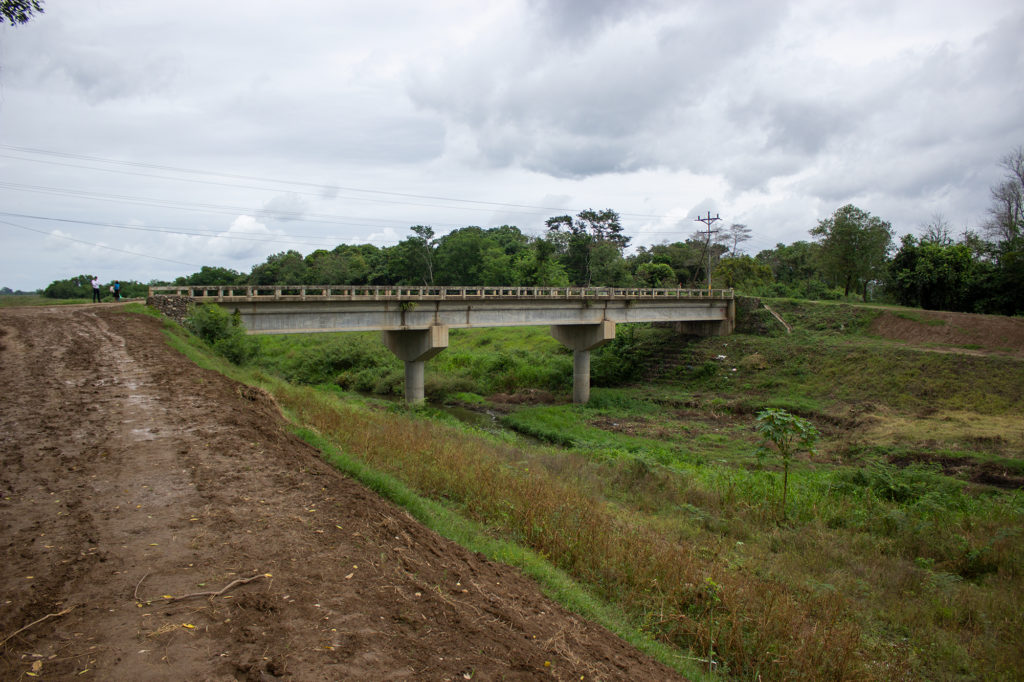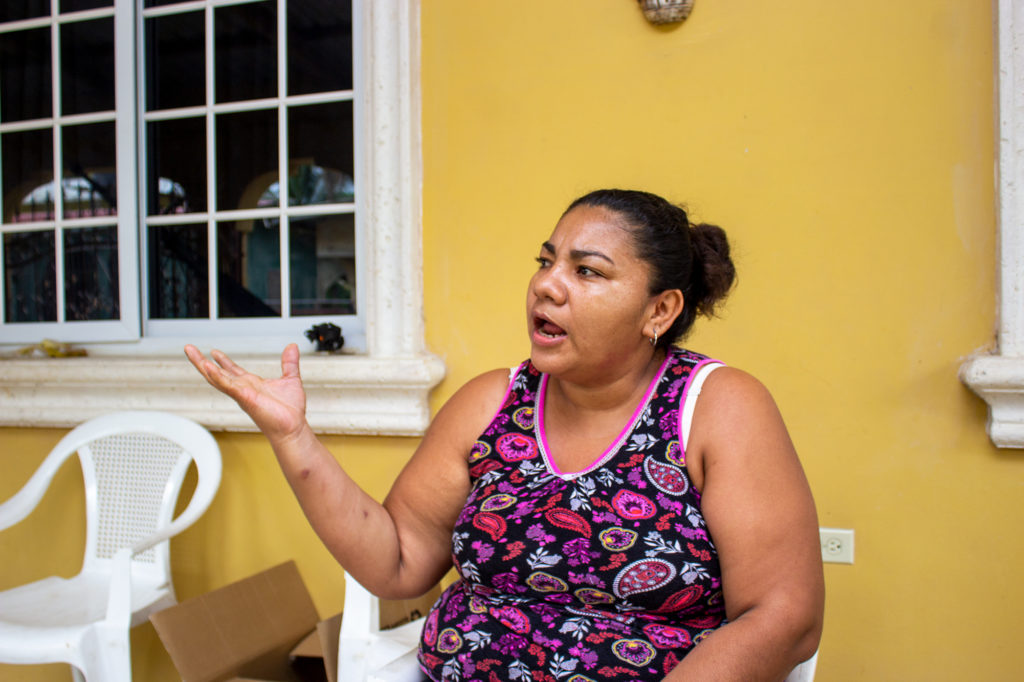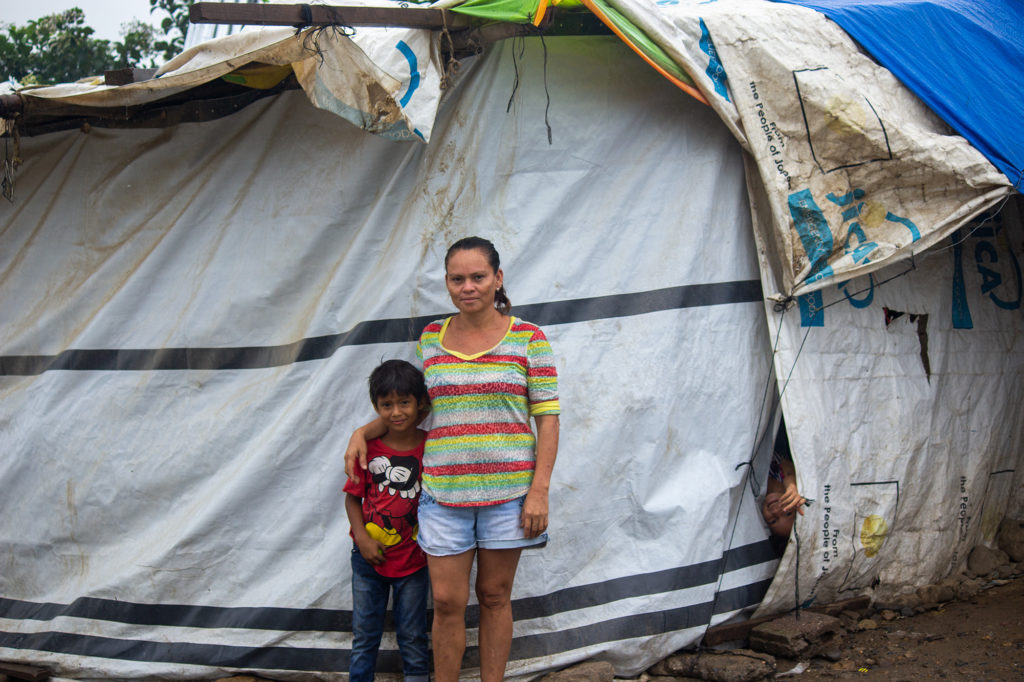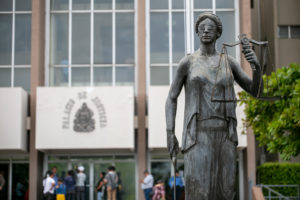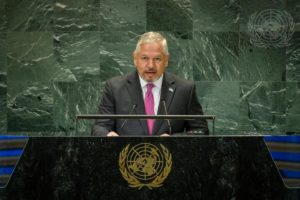It has been a year since hurricanes Eta and Iota devastated parts of Honduras and Central America. Especially hard hit were four municipalities which are led by mayors now looking to be reelected by the very constituents they have neglected. Contracorriente visited La Lima, where many people still live without permanent housing, jobs, or stable incomes. Some have tried to rebuild their homes with scraps of discarded building materials.
By Stephany Chávez
Photos by Antonio Gutiérrez
Four mayors seeking reelection in Honduras have neglected thousands of people who lost everything during hurricanes Eta and Iota in November 2020. Some neighborhoods look completely abandoned, and others still have no water or electricity service.
Three Cortés mayors ─ Santiago Motiño of La Lima, Arturo Castro of San Manuel, and Armando Calidonio of San Pedro Sula ─ and Mayor Alexánder López of El Progreso, Yoro, have done nothing to help thousands of their constituents living in desolate conditions after their homes were damaged or swept away by the two hurricanes.
Carlos Sánchez is president of the Colonia 22 de Junio neighborhood council. It’s a mud-clogged slum with subhuman living conditions that lies closer to the cities of La Lima and El Progreso than to the San Manuel municipality to which it belongs.
Sánchez says that during the November 2020 storms, 13 homes in his neighborhood were completely swept away by the heavy rainfall and flooding from the nearby Maya Canal.
The Maya Canal was built in 2005 to prevent flooding caused by Chamelecón River overflows. On November 4, 2020, hundreds of residents from surrounding neighborhoods took refuge on the bridge that crosses over this canal. Most stayed there until they could move into shelters or return home.
Sánchez claims that Santiago Motiño López, who is currently running for reelection as the National Party candidate for mayor of La Lima, doesn’t provide any assistance because most community residents have ID cards issued by the municipality of San Manuel, and therefore have to vote in that city’s municipal elections in late November. “For Mayor Motiño, we’re not on the La Lima map. And San Manuel’s mayor doesn’t know this place,” said Sánchez, referring to Santiago Castro of the Liberty and Refoundation Party (Libertad y Refundación – Libre).
Nor have the residents of Colonia 22 de Junio received any help from the mayor of El Progreso, Alexánder López, who is the secretary-general of the Liberal Party. López is seeking a fifth consecutive term as mayor of a municipality that abuts neighborhoods with thousands of San Manuel residents. López has been accused of pervasive political clientelism in El Progreso and has repeatedly refused to help San Manuel residents, arguing that they live outside his jurisdiction.
Armando Calidonio has been mayor of San Pedro Sula for 12 years and is seeking reelection again. Calidonio has made many unfulfilled promises to neglected San Pedro neighborhoods that border the Chamelecón River, like San Jorge, Fe y Esperanza, Morales 1, 2, 3 and 4, Canaán, and Ángel Fajardo.
Jesús Discua, who lives in the San Pedro Sula suburb of Chamelecón, manages a Facebook page that reports local problems. In an interview with Contracorriente, Discua said that the Canaán, San Jorge, and Fe y Esperanza neighborhoods have not had water or electricity since November of last year. And the Morales 1, 2, 3, and 4, and Ángel Fajardo neighborhoods need access roads repaired, as well as a drainage system.
Discua said that Steve Petty, a US missionary with the Al Pasar Jesús Christian ministry has helped some storm victims build houses in the San Jorge and Canaán neighborhoods.
Hurricane relief aid generally comes from private foundations or churches. Carlos Sánchez, from Colonia 22 de Junio, says they have only been helped by a few good-hearted people and the Humanity & Hope United Foundation, which provides monthly food aid to 52 families in this neighborhood. He reiterates that none of the mayors have provided assistance.
Contracorriente surveyed every political candidate in the country’s 18 departments and published their responses on the “Who do I Vote For” website (in Spanish). Two mayors responded to the questionnaire; Santiago Motiño and Alexander López. Motiño became mayor of Lima in 2018 and López is seeking his fifth consecutive term as mayor of El Progreso.
The hurricanes damaged La Lima more than any other municipality in the Sula Valley. Yet Mayor Santiago Motiño has not included environmental protection or natural disaster mitigation measures in his platform. Alexánder López’s priorities for El Progreso are security and employment; his platform also omits any initiatives focused on the environment and the most vulnerable sectors of his municipality.
The official website for the municipality of San Manuel presents Mayor Reynold Arturo Castro’s 2021 annual operating plan. None of the projects described in this plan include the Colonia 22 de Junio community and instead, focus on the municipality’s urban areas.
In San Pedro Sula, Calidonio’s official plan for his next term as mayor of the “industrial capital” does not prioritize the Chamelecón suburb. He will focus again on building highway overpasses and on the next phase of various public works.
Dire need in vulnerable areas of the Sula Valley
“When people returned home they had nothing to eat, so the foundation has been delivering monthly food donations,” says Daniel Mejía, who works with Humanity & Hope United, a U.S. foundation based in El Progreso. Mejía said that when they saw the dire need in La Lima after the hurricanes, the foundation began providing assistance to thousands of residents in December 2020.
As of May 2021, the Honduran government had allocated US$8.5 million to implement the You Are Not Alone (No Están Solos) program, which includes rescue efforts, shelter set-up, and storm clean-up. However, as of June 2021, thousands of storm victims in Chamelecón and La Lima reported that they had not received any type of aid.
María Quintanilla is a resident of La Lima’s Buen Samaritano neighborhood. Her humble home consists of scraps of plastic nailed to the side of her sister’s home on the muddy main street that runs through the neighborhood. María, who has always lived in overcrowded conditions, says that before Eta and Iota, she rented a room in a boarding house with her seven children. But the hurricanes destroyed the boarding house and she became homeless with no money to pay rent.
“We were rescued by a helicopter last November,” says Quintanilla, when La Lima was at the center of the storm. Countless people waited to be rescued from rooftops for 24 hours or more. Quintanilla climbed up to the roof on November 5 and was rescued the following day at 7:00 a.m. by an Armed Forces helicopter. Military aircraft flew through the skies of the Sula Valley for 27 days rescuing some 4,000 people stranded in hurricane-ravaged communities.
A year later, thousands of families in La Lima are still unable to rebuild their homes. Many school children from the Buen Samaritano neighborhood attend outdoor classes two days a week beneath the trees.
Quintanilla confided that her children go without eating some days, “I used to do laundry and sell bananas to earn some money, but I can’t even do that now. Whatever I have, I give to my children. And when I don’t have anything, they go without. Last year they were going to school, but not anymore.”
Read: La Lima: the epicenter of the devastation that Tropical Storm Eta caused
Between 1 and 16 of November last year, Honduras was hit by hurricanes Eta and Iota in a span of two weeks. On November 4, thousands of people fled from their homes to save themselves. They waited anxiously on riverbanks, rooftops, and even in trees, ready for the worst and hoping to stay alive, and watched as the water swept away everything in its path.
A report on the effects of these storms by the Economic Commission for Latin America and the Caribbean (ECLAC), estimates the total economic impact at US$2.15 billion.
The streets of the San José neighborhood, in the northeast corner of La Lima, are still in terrible shape, almost impassable. Many residents still do not have access to potable water or electricity. Numerous houses have been abandoned and rubble still litters the neighborhood streets.
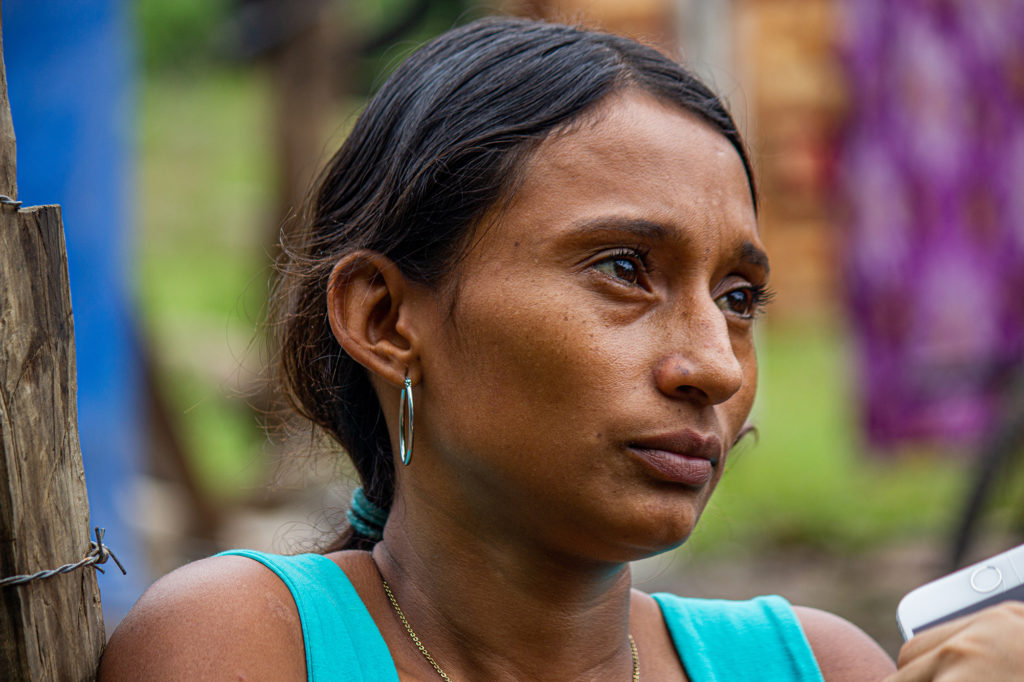
Some people never returned because it was impossible to rebuild their homes or because they were afraid of another natural disaster.
María Victorina is a resident of the Buen Samaritano neighborhood who lived in a wood house next to a levee that was swept away in the torrent. She lost everything. After being left without a roof over her head, she and her 70-year-old husband built a home out of scrap lumber, plastic sheets, and old metal roofing given to them by neighbors and collected scraps from the piles of debris left behind by the hurricanes. She lives there with her 76-year-old mother and 89-year-old father. “My husband is the breadwinner, but he only earns about US$41 a week,” says a worried María.
Sara García and her family were rescued by neighbors in a small canoe during the floods. They then walked for three hours to El Progreso. Now they live in a house that they rent from a woman whose clothes Sara used to launder. She says, “The owner left the country after the storms.” Electricity wasn’t restored in San José until March, so Sara’s family and other neighbors had to draw water from a well.
Jairo Joel Hernández, president of the Las Mañanitas neighborhood council, says that the people who are living around the bridge over the Maya Canal do not have basic services. The neighborhood council’s requests to La Lima’s municipal government have been ignored. “A little while ago, about 10 people came around here taking applications for decent housing, but we haven’t heard anything more about it,” said Hernández.

Esmeralda Ramírez, who spent several nights on a rooftop during the floods, lives in a community of 200 with no potable water service. Neighbors who have cisterns share their water with others.
Ramírez says that the Honduran Red Cross used to come to the Suyapa neighborhood with a tanker truck to distribute water, but they could only provide each family with a little water and the service has now been discontinued altogether. Ramírez posted messages on Facebook asking for help to rebuild her home. A little help trickled in and she was able to buy cement blocks to start building. But the money has run out and Ramírez has halted construction.
As the November 28 general elections draw near, little has been said about the need to restore the lives of hurricane victims. However, millions have been spent on political campaigns and billboard and media advertising.

